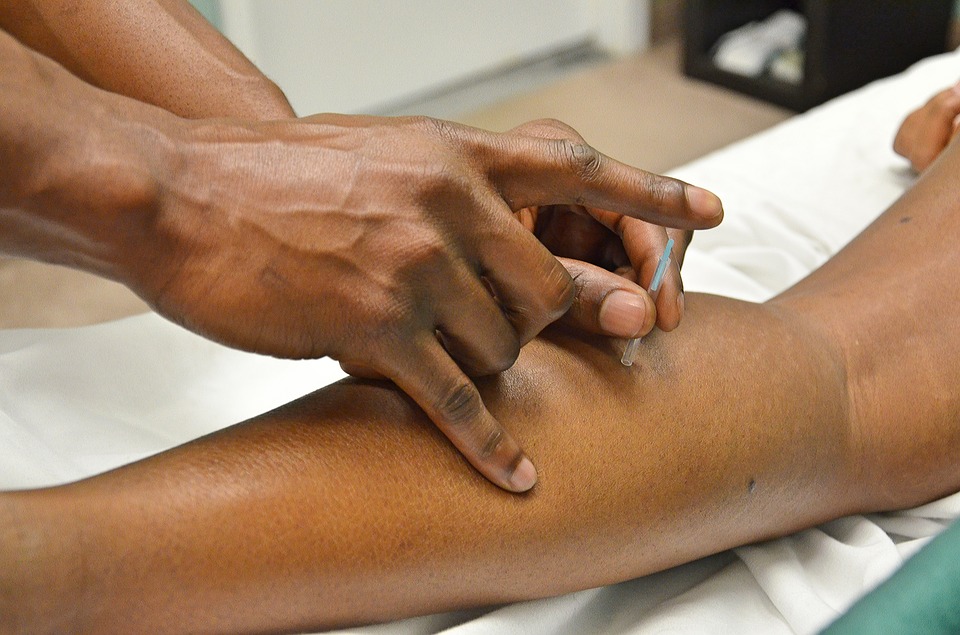Dry needling, also known by Intramuscular Manual Therapy is one of the efficient neurophysiological treatment used to relieving pain. In the procedure, a needle is inserted into the skin to the myofascial trigger points. The myofascial trigger points usually have a number of knots, which are responsible for the pain cycle of the body.
When the needle is inserted in the knot, they are released and the pain is relieved. It is very necessary to get dry needling done from any professional to avoid the risk of any potential damage. Most of the times, people suffering from extreme pain undergo dry needling physical therapy.
How does dry needling work?
The process of dry needling is unknown. However, the procedure does work on some biochemical effects. When the injections are given to release the knots, it leads to a biochemical reaction which has a positive impact.
The biochemical reaction further helps in easing the pain. Moreover, you should also keep a check on the local twitch responses or the spinal cord reflexes. If you get the twitch responses with the dry needling response, you will be able to get over the pain.
Why should you try dry needling therapy?
If you are suffering from chronic pain, you should definitely try dry needling, as it will help in relieving a lot of stress. Some of the prominent reasons for trying dry needling treatment include the following:
Relaxes the muscle
Usually, our body muscles if inactive for a long time tend to become tight. These tight muscles are known as knots or trigger point. Therefore, dry needling physical therapy can help to loosen these knots and calm them down. Basically, it brings back the normal length of the tight muscles.
Relieves pain and releases neurotransmitter
Dry needling calms the body and encourages it to release opiate peptides such as dynorphins, enkephalins, and beta-endorphins. The neurotransmitters further help to prevent the pain signals, which reach out to the brain or spinal cord. Therefore there are very fewer chances of pain occurring again.
Enhanced blood flow
The tight muscles can cause extreme pain in certain parts of the body. Dry needling physical therapy finds the trigger point and releases them. It works in the method of the ultra-thin acupuncture. Since it relaxes the muscles, it contributes towards making the blood flow of the body smooth.
Treats chronic pain
Dry needling treatment is known to treat acute as well as chronic pain. However, it is one long treatment which needs to operate on a long-term basis. Dry needling can help to treat various and different conditions such as back pain, neck pain, sciatica, plantar fasciitis and even more.
Encourages movement
If you have a problem in moving, dry needling physical therapy can be of great help. Although it isn’t the same as that of acupuncture, it can work in similar ways. It is also known to enhance the range of motion in people. Since dry needling helps to release the trigger point and improve the blood flow it helps in moving. Moreover, it can also help in lowering the pain of the body.
What problems can be treated by dry needling?
Dry needling Atlanta is known to treat various musculoskeletal problems. The major factors that increase the symptoms of pain are the muscles and myofascial pain. It can treat various acute and chronic conditions such as arm pain, back and shoulder pain, neck pain, tennis elbow, carpal tunnel.
In some cases, dry needling physical therapy can also treat stress and migraine. Apart from these, it also treats buttock pain, jaw pain and various leg pains such as calf spasms, sciatica, and hamstrings strains.
How long does it take to work?
Dry needling treatment takes a long time to work. Therefore, you will need to make various visits to your doctor to see the effect. It causes both mechanical and biochemical changes to the body for better convenience.
If you have been suffering from chronic pain, you can consider going from dry needling physical therapy. Although you may feel comfortable after some treatments, you should keep a check on it. The musculoskeletal systems are constantly affected by gravity, therefore the chances of pain reoccurring are high.







